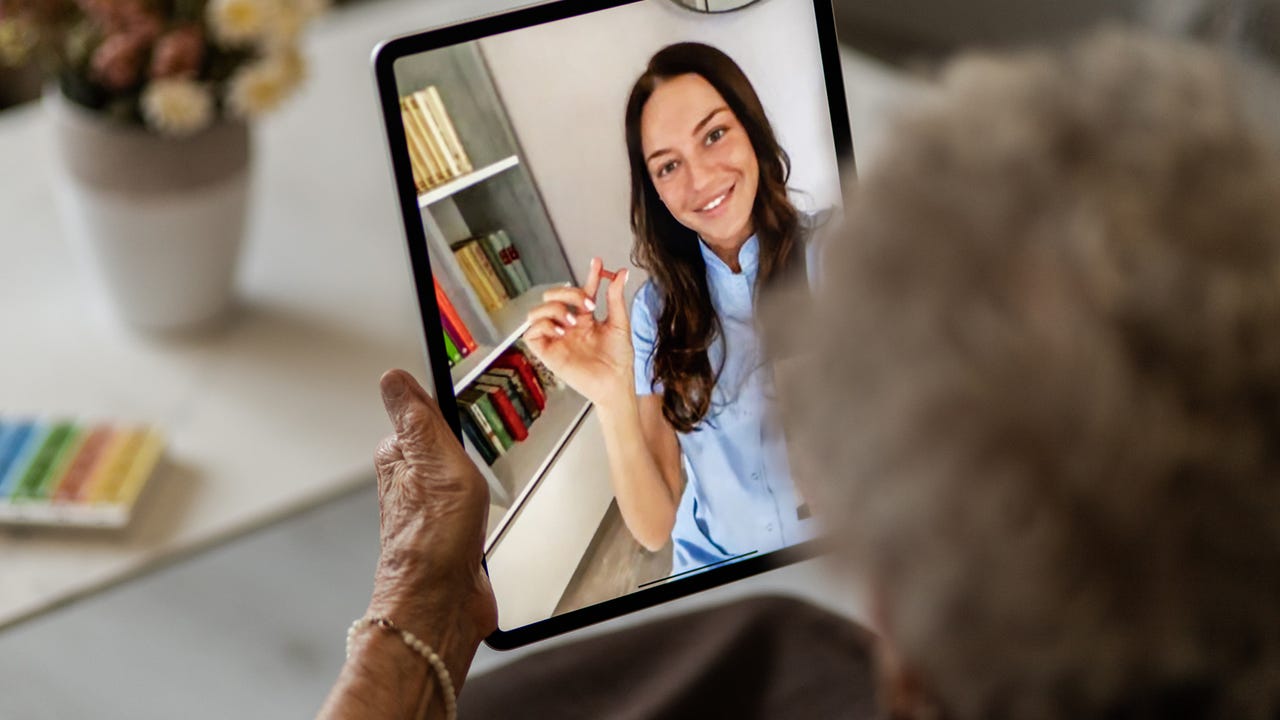
ZDNET Multiplexer
mul-ti-plexer-er. noun. A device, in electronics, that synthesizes disparate data signals into a single, uniform output. ZDNET Multiplexer merges various perspectives, media types, and data sources and synthesizes them into one clear message, via a sponsored blog.
ZDNET Multiplexer allows marketers to connect directly with the ZDNET community by enabling them to blog on the ZDNET publishing platform. Content on ZDNET Multiplexer blogs is produced in association with the sponsor and is not part of ZDNET's editorial content.
Digitising aged care – the role of technology in delivering quality care

As with many sectors, the solution to these troubles does not lie in simply throwing more money at a systemic problem. The aged care sector needs to be able to work smarter to resolve today's challenges.
However, this presents a significant challenge for a sector which traditionally has been slower to adopt the innovations of the digital age. Limited funding and the requirement to focus staff hours on resident care has left little time or money for investment in technology, and as a result, opportunities to invest in systems and processes that would automate tasks and improve staff engagement and resident care have been missed.
With Australia's population growing older, the aged care sector faces an urgent need to ensure the people it employs are being utilised as efficiently as possible. As the sector emerges from the pandemic, it has the chance to rebuild its model of care using technologies that can make a meaningful difference to the working lives of staff and residents and drive optimisation and efficiency across a business model under constant fiscal strain.
The pathway to digital aged care
The future for aged care lies in using digital technologies and services to improve staff efficiency and deliver better outcomes for residents, but first providers must invest in robust, dependable, and secure digital connectivity and infrastructure to provide the foundation for digital service delivery and future innovation.
Modern wireless communications based on Wi-Fi and 5G network technologies offer the ability for widespread deployment of digital devices by connecting all points within aged care facilities, driving a mobile-first way of working and caring and by also extending service options to support home-based monitoring and communications.
The combination of industry-standard technology and secure public networks, such as those offered in partnership from Cisco and Optus, provide a low-cost and proven method for delivering reliable connectivity wherever it is needed.
These foundations provide the basis upon which quick-win implementations can be made to drive immediate productivity gains and cost-efficiencies, such as through the adoption of mobile-first cloud-based services for scheduling and communications for staff, or for offering more entertainment and other engagement options for residents. Even simple implementations, such as the replacement of paper forms with digital documents, can create workflows that boost efficiencies, reduce errors and free up time for carers to spend more quality time with residents
From quick wins to long term gains
These early implementations can also be used as the basis for more advanced services, such as the use of AI-powered video monitoring systems to boost security and resident safety, including location services, and movement and fall detection. Digital networks can also improve communications to reduce the need for physical movement within facilities, while also supporting a data-driven understanding of how facilities are performing and the levels of care that residents are experiencing.
As aged care providers become more adept at utilising networks and digital monitoring, they can begin exploring new models for service delivery, including services for in-home care.
Allowing the elderly to remain in their homes for longer not only reduces the strain on facilities but also provides a better quality of life. This can be enabled safely through the provision of home-based monitoring with automated alert systems, including systems for tracking of daily routines and vital signs, and by providing video communications and panic button facilities. Of course, all these capabilities must be delivered with appropriate levels of security and privacy controls.
Building digital aged care
Cisco and Optus have enjoyed a long history working with aged care providers, providing reliable and secure services that are enabling a better aged care experience. They have also been at the forefront of the development and delivery of digital services across other industries, many of which are applicable in aged care.
These capabilities are on display at the RMIT Health Transformation Lab in Melbourne, a collaboration between Cisco and the university which brings together the best health research and technology capability to create solutions for specific use cases in an aged care setting.
The Lab is currently developing solutions for application in aged care, including fall detection, behaviour risk detection, and physical hazard detection, which can be applied in both aged care facilities and home environment.
These developments are also coupled with investigations of opportunities for automated data collection, which can then facilitate analysis to further improve service delivery and resident care.
Conclusion
With Australia's population growing older, and the aged care sector already struggling under the burden placed upon it, it is vital that new solutions be found that can not only reduce the workload of staff but also improve the experience for residents and other service users.
Australia's population is becoming increasingly digitally savvy and have higher expectations for digital service delivery, and these expectations are held both by aged care service users, and by the younger generations that are contributing to decisions about their ongoing care.
The Royal Commission into Aged Care Quality and Safety and the pandemic present a clear opportunity to re-examine the role digital technologies can play in lifting service quality.
Any investment we make today in delivering a better aged care system is an investment we all have a strong interest in.
To find out more request a copy of the Optus 'Digitising Aged Care' report, here.